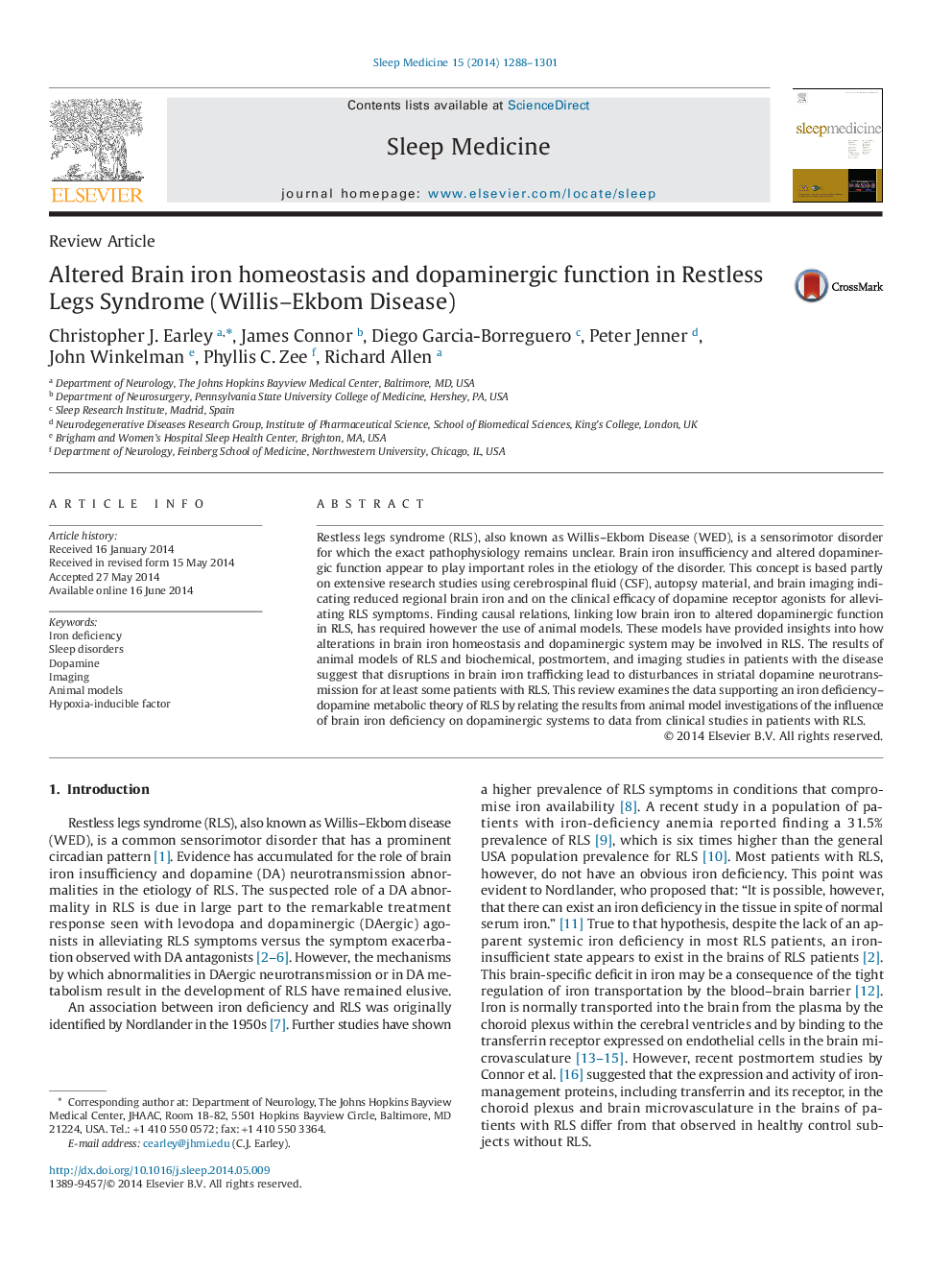| Article ID | Journal | Published Year | Pages | File Type |
|---|---|---|---|---|
| 6060559 | Sleep Medicine | 2014 | 14 Pages |
â¢The role of altered iron homeostasis in restless legs syndrome (RLS) is reviewed.â¢Iron-deficient rodent as a model for understanding RLS pathology is explored.â¢A role for the activation of the hypoxia pathway in RLS pathology is discussed.â¢The data on dopaminergic system involvement in RLS are reviewed.â¢Possible alterations in synaptic dopaminergic dynamic in RLS are discussed.â¢A theoretical model for dopamine-agonist-induced augmentation is presented.
Restless legs syndrome (RLS), also known as Willis-Ekbom Disease (WED), is a sensorimotor disorder for which the exact pathophysiology remains unclear. Brain iron insufficiency and altered dopaminergic function appear to play important roles in the etiology of the disorder. This concept is based partly on extensive research studies using cerebrospinal fluid (CSF), autopsy material, and brain imaging indicating reduced regional brain iron and on the clinical efficacy of dopamine receptor agonists for alleviating RLS symptoms. Finding causal relations, linking low brain iron to altered dopaminergic function in RLS, has required however the use of animal models. These models have provided insights into how alterations in brain iron homeostasis and dopaminergic system may be involved in RLS. The results of animal models of RLS and biochemical, postmortem, and imaging studies in patients with the disease suggest that disruptions in brain iron trafficking lead to disturbances in striatal dopamine neurotransmission for at least some patients with RLS. This review examines the data supporting an iron deficiency-dopamine metabolic theory of RLS by relating the results from animal model investigations of the influence of brain iron deficiency on dopaminergic systems to data from clinical studies in patients with RLS.
